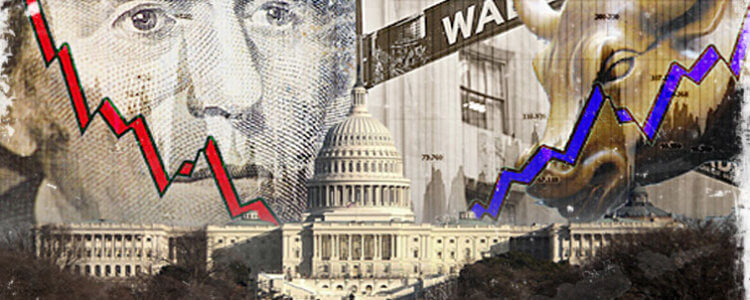Gold vs Bonds, Which Direction Should You Take for Safety?
Has your financial planner been trying to get you to invest in sovereign bonds from various countries?
The problem with many sovereign bonds today is that an enormous percentage of them come with negative yields, meaning that you pay the often troubled sovereign country for the privilege to use your money.
This is supposed to be a favorite safe place to park your hard earned cash. But is it really so safe to lend your money to troubled sovereign countries like Japan and the various countries of the European Union?
Consider why these bonds deliver negative yields in the first place. How did it come to pass that sovereign countries can require you to pay them to utilize your money?
Former Federal Reserve Chairman Alan Greenspan would have you to believe it is because of competition.
His thoughts on the matter: “Whenever you see strong currencies in a normal market, they’re spread against say Spain and Italy’s 10-year notes, it’s relatively stable through time. But as the rates overall go down, clearly at some point as the rates go down you’re going to pick up negative rates for the highest-quality currencies – like of course the Swiss franc – and I think that this is just a passing fancy.”
Greenspan can call it like he sees it, but does this justify you putting your hard earned investment dollars into vehicles in which you pay to participate?
The Real Reason So Much Sovereign Debt Pays Negative Yields
The numbers of negative debt yielding sovereign bonds that you see offered today are truly eye watering.
Two years ago almost none existed. In February of 2015, the entire amount of global debt with negative yields amounted to a “mere” $3.6 trillion. One year later by February of 2016 this amount had practically doubled to reach $7 trillion. Less than a month ago, it reached $11.7 trillion. Now it has achieved a staggering total of over $13 trillion per last week’s published calculations of Bank of America Merrill Lynch.
That now exceeds 50% of all government debt issued on the planet! If this is just a temporary new normal that Greenspan believes, then why is the trend of negative sovereign debt continuing to double in ever shorter time frames?
The answer is not one which will inspire confidence in you. The Bank of Japan and European Central Bank have been increasingly engaged in massive quantitative easing. In an effort to jump start failed Japanese and continental European economies back to growth, these central banks have been throwing everything including the kitchen sink at their economies.
These central banks are busily printing money (debasing their currencies) and using this money to buy up sovereign and even corporate debts now in an effort to prop up the markets. The governments then take these extra proceeds to use as spending money to try to boost production and GDP within their own sinking economies.
The byproduct of this activity to bolster sagging and even stagnant economies results in falling government sovereign bond yields. More printed up money demand for these securities leads to ever lower and lower yields.
So in the vast majority of cases, sub-zero sovereign bond yields do not represent higher quality, no-risk government bonds at all as Greenspan would have you to believe. Instead, they reveal the nations
that are struggling the most.
Think about it, and it makes perfect sense. Japan has been caught in a downward deflationary stagnation spiral for more than two decades now. They continue to throw money at their bond markets and banks in an effort to increase economic activity.
Yet after years of doing this, the economy has not at all improved. Do you really consider Japanese sovereign debt tied to an economy that has not materially grown in nearly twenty-five years to be safe haven debt?
Look at the EU and its national countries’ sovereign debt. This largest economic block in the world has not yet reached its former GDP and growth levels seen just before the financial crisis erupted in 2007/2008. This is more than five years after the crisis officially ended!
You might be able to make a case that sovereign bonds from countries such as Norway, Switzerland, and Sweden are more likely to be safe haven places to park your investment dollars. Yet if things are so rosy in these countries, why do they need to issue government debt at all?
The answer is that there is no such a thing as safe haven positive yielding sovereign government debt. Gold is your safe haven destination of choice.
No government can print or effectively manipulate gold. While it may not pay a yield, at least you do not have to pay anyone to keep your money invested in it.
>>Click Here or the Image below for a FREE Gold IRA Rollover Kit<<








